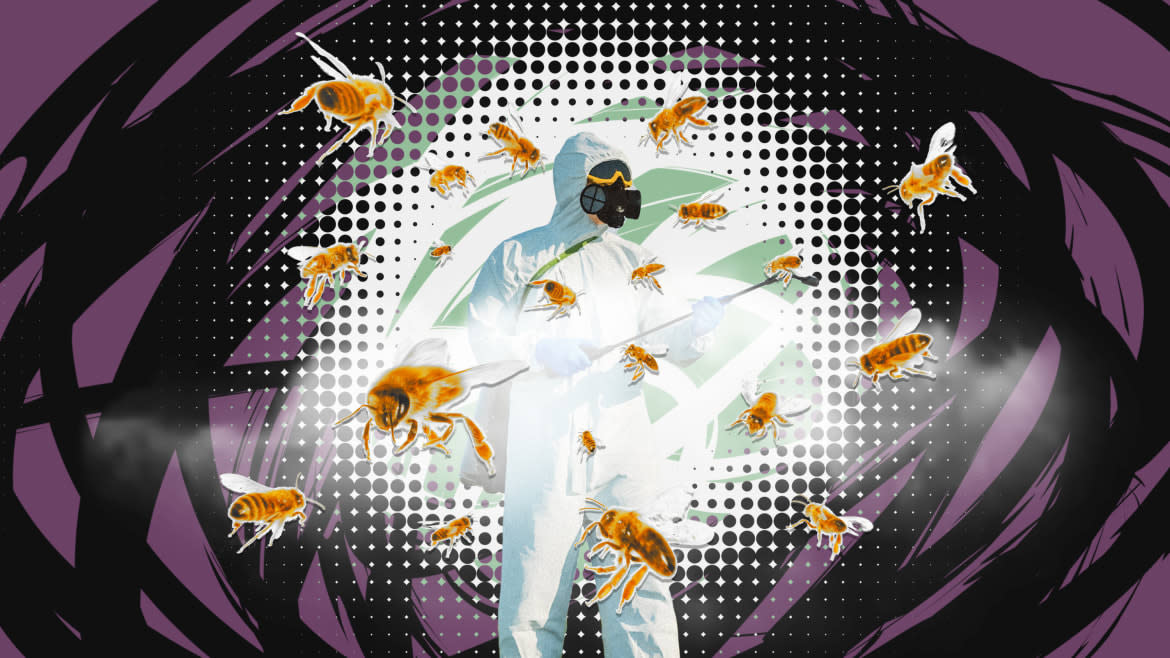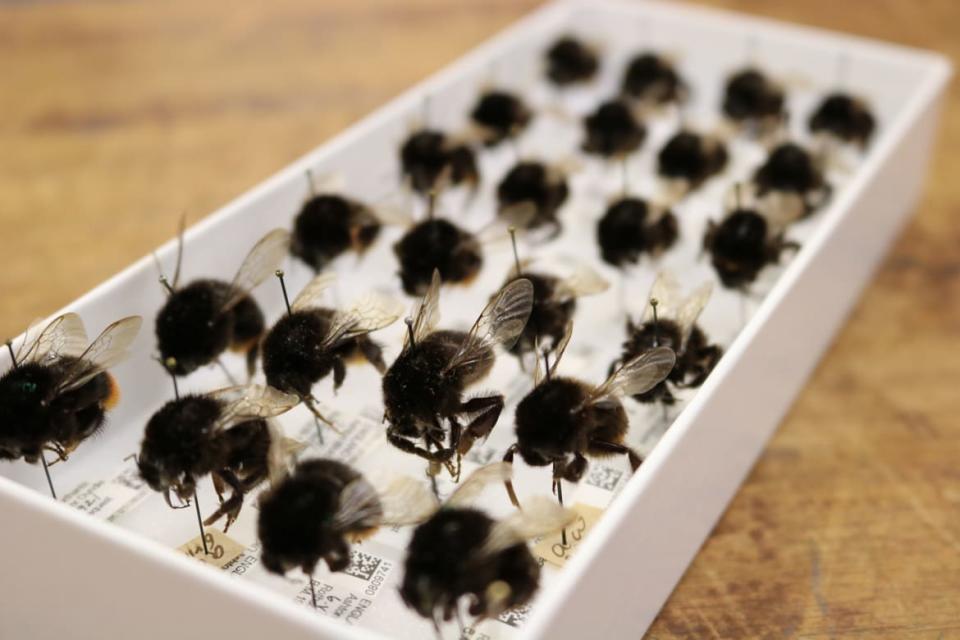Human Activity Is Wreaking Havoc on Bee Brains and Bodies

Punch-drunk honeybees unable to walk in a straight line after they’d ingested “safe” concentrations of insecticides; bumblebee wings showing signs of stress due to climate change: Humans are messing up bees beyond repair, in ways that could threaten their existence as well as the survival and health of the plants they pollinate.
Two recent studies explore this problem like never before, confirming the role of human activity in wreaking havoc on bee populations. Taken together, the research suggests that humans pose an existential threat to these pollinator species—one that cannot be fully countered by a simple fix.
“The work that we’re doing is revealing that a lot of our actions are putting these insects under pressure,” Richard Gill, an insect evolution researcher at Imperial College London, told The Daily Beast. Gill led a study published Wednesday in the Journal of Animal Ecology, where he and his team measured the wings of four different bumblebee species preserved in museum collections across Britain. He found that over the last century, warm and wet years led to bumblebees developing less symmetrical wings—an indicator of stress that is akin to the bee wearing scars due to its environment.
“Tiny changes in something like the wing shape of a plane, for example, could have quite obviously devastating effects,” Gill said, though it’s still unknown how wing asymmetry affects bee flight.
Current methods of measuring climate change’s impact on species often rely on lagging metrics, Imperial College London life sciences researcher and study co-author Aoife Cantwell-Jones told The Daily Beast. This means that organisms may not display signs of stress until generations later.

A collection drawer of bees at the Natural History Museum in London, England.
Wing asymmetry, on the other hand, is directly tied to the stress a bee experiences during one period in its development. Since the museum collections the researchers used stretched back a century, they first made sure that the bumblebees’ age did not predict their wing condition—had that been the case, Cantwell-Jones said, the older bees would have had the greatest asymmetry when, in fact, some of the most recent specimens did.
“Variation in climate can clearly cause higher stress,” Gill said, and human-caused climate change is creating a perfect storm of warm and wet temperatures for the bees.
Another study published Wednesday in the journal Frontiers in Insect Science tackled another facet of humanity’s disastrous impact on nature: insecticides. Rachel Parkinson, the lead author of the study and a neuroethologist at Oxford University, told The Daily Beast that a great deal of research has made clear the detrimental effects of pesticides and insecticides on key pollinator species like honeybees. “It’s a bit disheartening” that these harmful chemicals are still sprayed to kill these insects, she said.
In this study, however, Parkinson focused on the neurological and behavioral effects on honeybees of low doses of insecticides typically considered safe and acceptable for widespread use. What she and her team found was startling: Bees that fed on insecticide-dosed sugar water ambled around when presented with moving images they would otherwise lock onto. And even when they seemed to want to orient toward an image, they couldn’t seem to walk in a straight line.
To make these measurements, Parkinson placed dozens of bees on top of a ball kept afloat by upward-directed air one at a time. A pipette tip glued to their backs kept them from flying away, and Parkinson showed the bees vertical black bands of different widths that moved across a screen in front of them. After she warmed them up under a heat lamp (a tip given to her by a fly researcher), the moving images caused bees to orient themselves and walk on the ball, which rotated but remained in place.
Parkinson said that bees use this form of visual processing and motion detection to remember how far they’ve flown and return to their hive. In extreme cases, pesticides can lead to a poorly understood phenomenon called colony collapse disorder—Parksinson said that future research might tie the chemicals to bees leaving their hives and never returning.
“Bees tend to be very sensitive to different things happening in the environment, and right now, they seem to be really struggling,” she said.
The researchers concede that there isn’t a simple solution to either of these anthropogenic issues—banning pesticides or reversing climate change immediately is out of the question. But Gill said that studying overlooked museum collections to make sense of the past can help scientists make more informed predictions about the future. And Parkinson said that there are effective alternatives available in some instances where insecticides are used, such as introducing beneficial predatory insects like ladybugs or dragonflies.
“I don’t think that stopping the use of insecticides is the answer, because of the way that agriculture operates,” she said. “But I think a shift towards finding more natural pest management solutions will help get us where we need to go.”
Get the Daily Beast's biggest scoops and scandals delivered right to your inbox. Sign up now.
Stay informed and gain unlimited access to the Daily Beast's unmatched reporting. Subscribe now.

